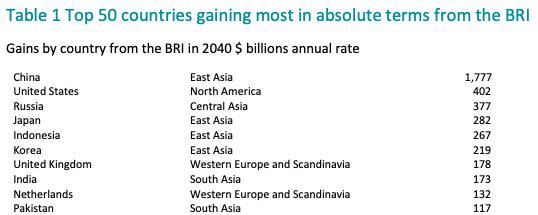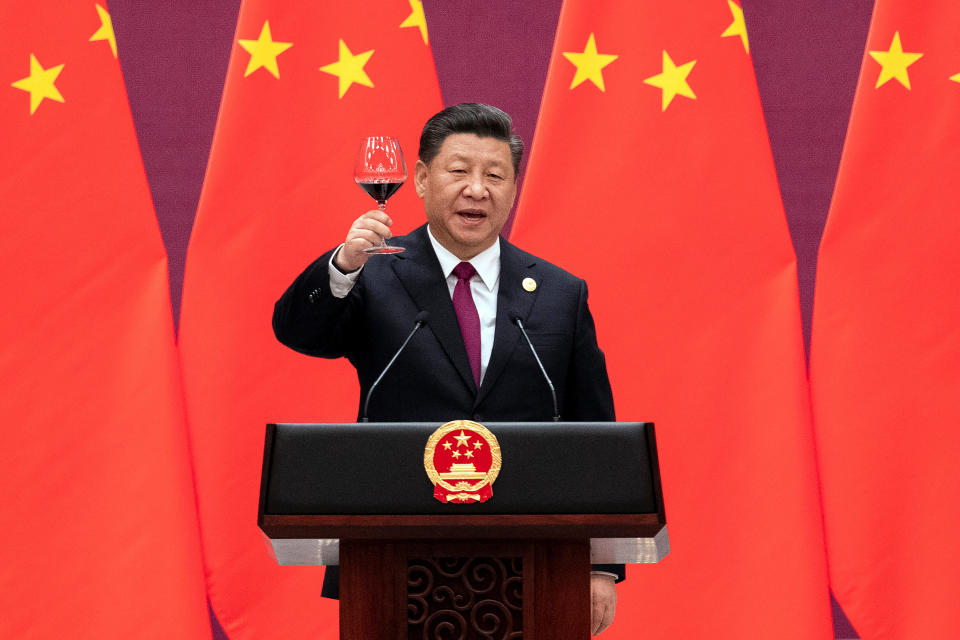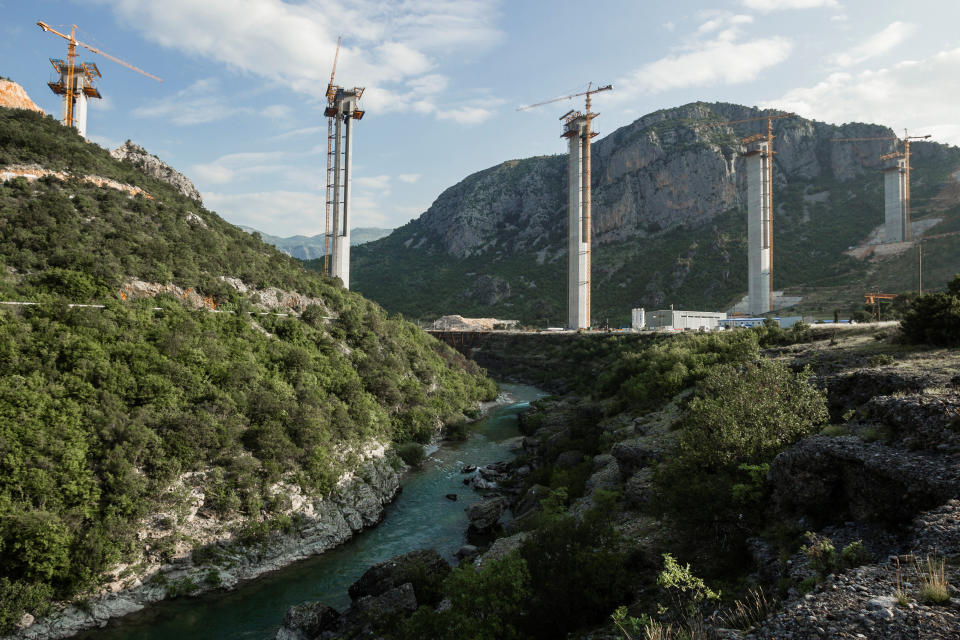China’s new Silk Road could actually boost U.S. GDP, study argues
China’s Belt and Road Initiative (BRI) — or the new Silk Road — could actually boost U.S. GDP, according to a report by the Centre for Economics and Business Research (CEBR).
The study, sponsored by UK-based Chartered Institute of Building, looked at how infrastructure gains from the BRI could boost productivity across the world. After factoring in trade frictions, the study found that the BRI could increase U.S. GDP by 1.4% by 2040.
Despite assuming zero direct involvement of the U.S. in the BRI, “the U.S. gains from the boost to world GDP are such that in absolute terms.” In fact, the researchers argued that “the U.S. is the second largest beneficiary. Our calculations suggest that the BRI will leave US GDP in 2040 $401 billion higher, a boost of 1.4%.”

U.S. will benefit from ‘indirect effects of world GDP being boosted’
The BRI’s key driver for U.S. growth would be trade: Because of the U.S. economy’s size, the country can benefit “from the indirect effects of world GDP being boosted,” the researchers explained.
“We will expect U.S. exports to be delivered a boost through the kind of increased economic growth in some of the key external markets,” CEBR Senior Economist Pablo Shah told Yahoo Finance. At the same time, imports were also likely to become cheaper because “transport developments and energy links and higher integration across countries outside of the U.S. would facilitate more efficient means of production, which would mean cheaper inputs for consumers.”
This, Shah argued, would boost consumption overall and stimulate the U.S. economy.
And while the increase may seem relatively small at 1.4%, the researchers assert that it’s relatively massive when compared to other countries because “the absolute size of the U.S. economy is still such that this is more than the absolute boost to any other economy except China.”

‘The report exaggerates the size’
Not all experts agreed with the report’s assessment that the BRI would help the US.
“This report exaggerates the size — current and future — of China’s Belt and Road,” Jonathan Hillman, senior fellow at the D.C.-based think tank Center for Strategic and International Studies (CSIS), told Yahoo Finance. “I am not aware of any reliable data suggesting that $2 trillion of projects are underway. ... As I’ve written elsewhere, it is a myth that China is spending trillions.”
Hillman added that the assumptions weren’t detailed enough, “which is why I wouldn’t take this estimate seriously.”
And ultimately, the entire BRI — and the economic benefits expected to come from it — “all depends on whether the right projects are chosen and how they are delivered,” Hillman said. “In other words, quality matters. What the BRI’s biggest advocates tend to forget is that infrastructure projects, if done poorly, can destroy more value than they create.”

‘They’re aiming to be a global hegemon’
China’s big infrastructure push through the BRI was born partly out of fears that the country’s economic growth was slowing down, as well as the desire to improve China’s influence on the global stage.
“When you look at what their ambitions are… whether it be through Made in China 2025… or China 2049, which through the Belt and Road Initiative calls for major infrastructure dominance. ... There’s no question that they’re aiming to be the global hegemon,” Bowen, Hanes & Co. CEO, President and CIO Jay Bowen told Yahoo Finance’s On The Move in an interview.
Concerns range from fears of China of laying debt traps for fragile and capital-hungry countries to outright threatening national security.
Secretary of State Mike Pompeo slammed China’s lending practices as “predatory” and warned that Chinese technology in particular poses a security risk to countries which use them.
But the CEBR researchers pointed out a silver lining: “We estimate that the Belt and Road Initiative is likely to boost world GDP by 2040 by $7.1 trillions per annum. This raises world GDP by 4.2% of likely GDP in 2040… As many as 56 different countries are forecast to have their annual GDP in 2040 boosted by more than $10 billion as a result of the project.”
And while the BRI has many “roads” — from maritime to digital — the land-based projects are the biggest contributors to global GDP, Shah noted.
“Major growth such as a China-Pakistan Economic Corridor and also large rail schemes — those are probably deliver the largest benefits in terms of construction spend, and also facilitating more efficient trade,” Shah said. And as China expands its scope, “we see this potentially shifting towards things like energy and see sea-based transport as well as digital infrastructure, perhaps later on in the projects that we forecast down the road.”

Tariffs would ‘diminish a lot of the benefits’ of the BRI
Tariffs were factored into the equation, Shah said, but if President Donald Trump manages to exert “maximum pressure” on China, that would “certainly diminish a lot of the benefits that we're talking about in the report.”
And Chinese investment has already been slowing even before the tariffs, argue some experts, which could also hinder the BRI’s development.
“China is already facing financial strain,” American Enterprise Institute China scholar Derek Scissors told Yahoo Finance in a previous interview. “When the BRI was launched, China’s foreign exchange reserves had been rising for more than 20 years. They fell 2014-16. Now they are stable, but China is in a considerably worse position than five years ago.”
—
Aarthi is a reporter for Yahoo Finance. Follow her on Twitter @aarthiswami.
Read more:
Ex-WH economist: China’s New Silk Road is a 'threat to the existing system'
EU on the New Silk Road: China is both a 'partner' and a 'systemic rival'
The new Silk Road is China's 'second pillar of legitimacy' — and Europe is starting to buy in
Read the latest financial and business news from Yahoo Finance
Follow Yahoo Finance on Twitter, Facebook, Instagram, Flipboard, SmartNews, LinkedIn, YouTube, and reddit.
